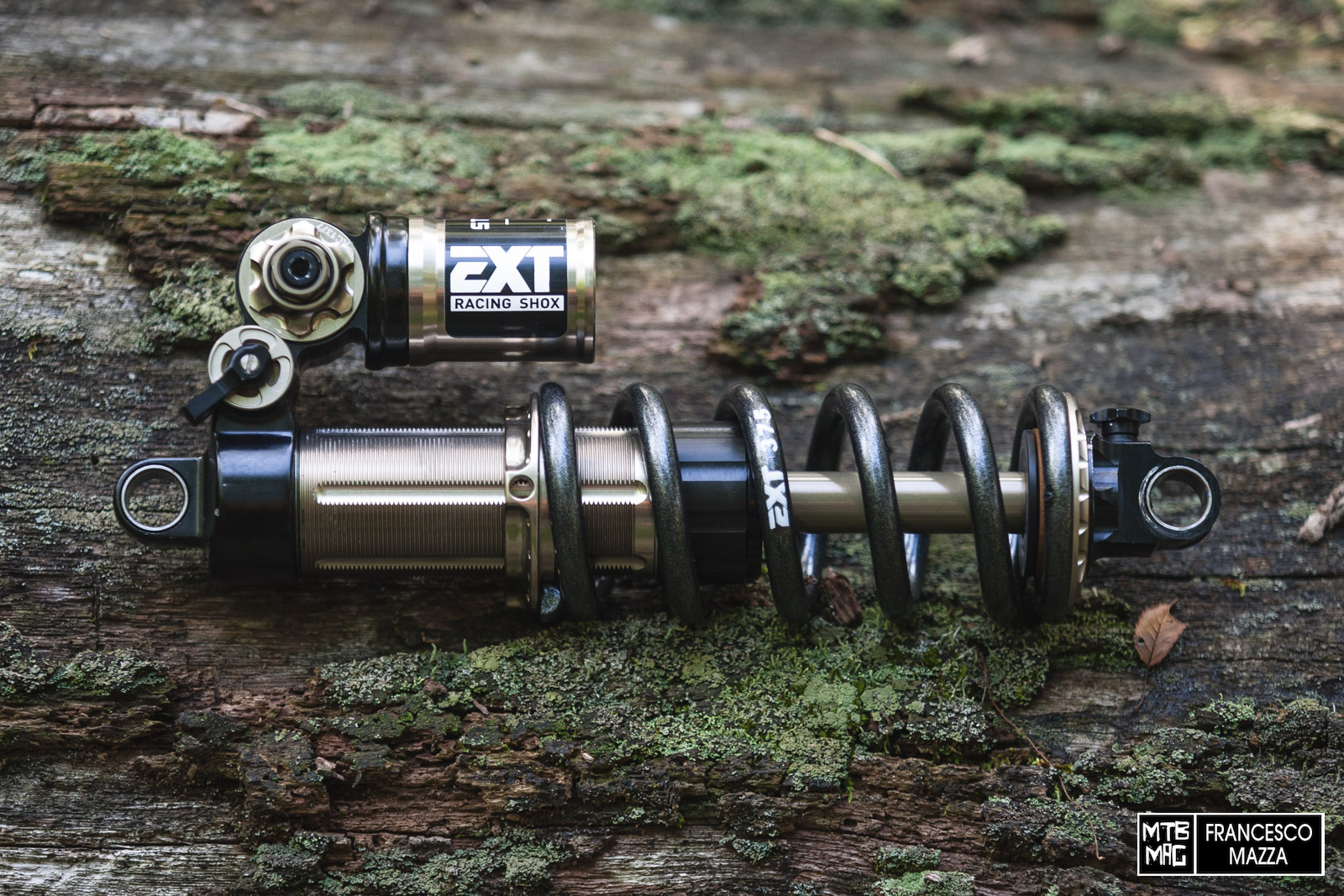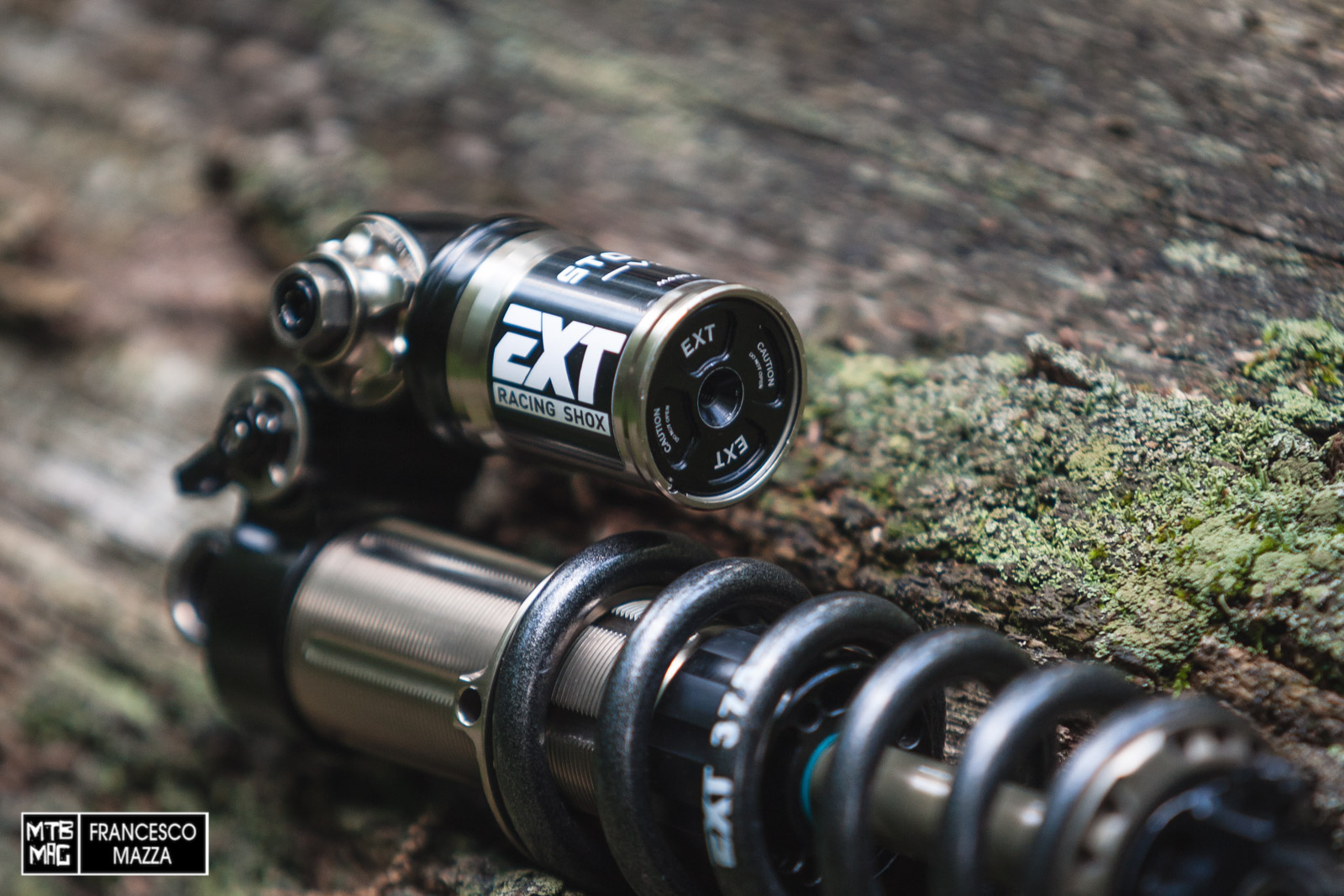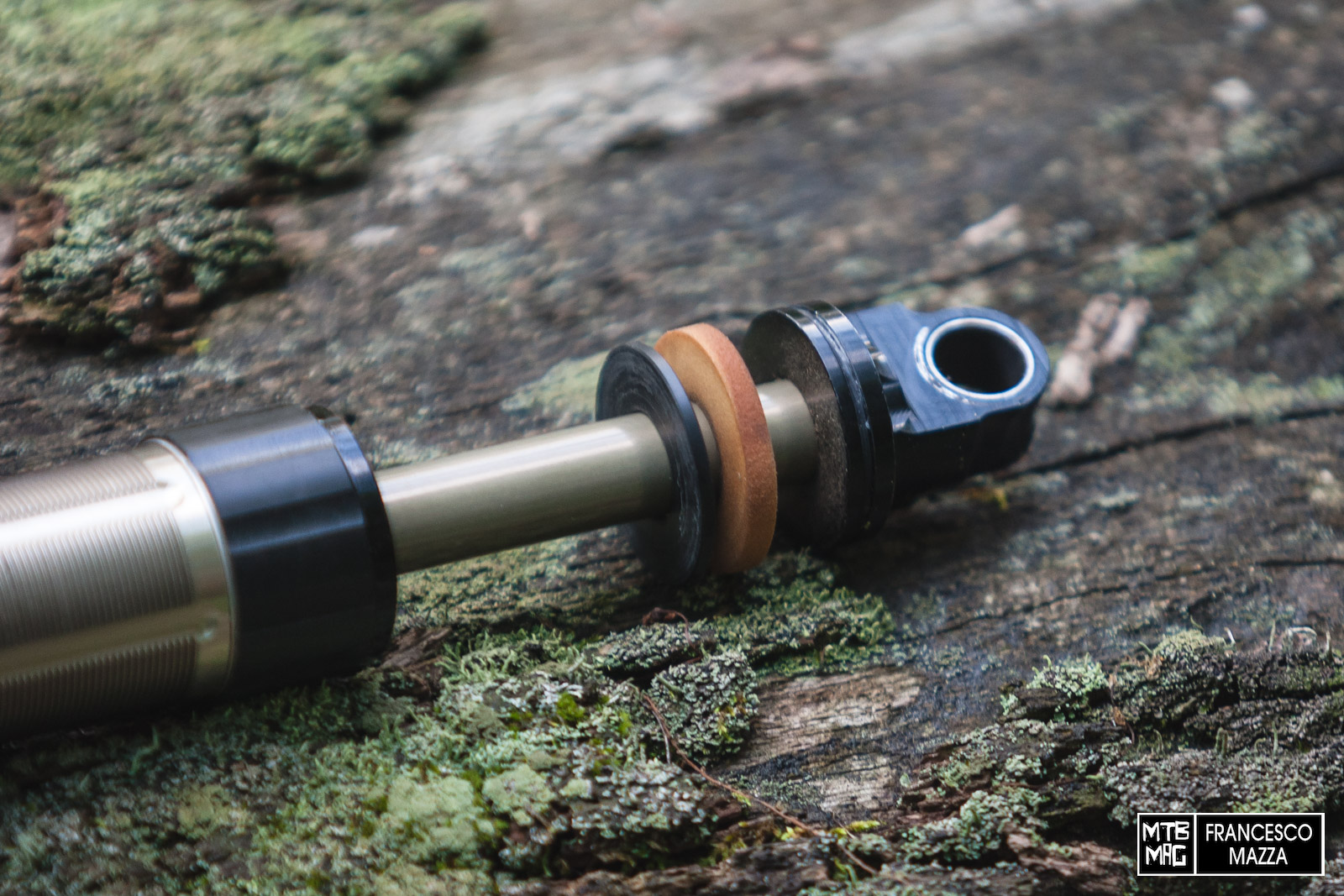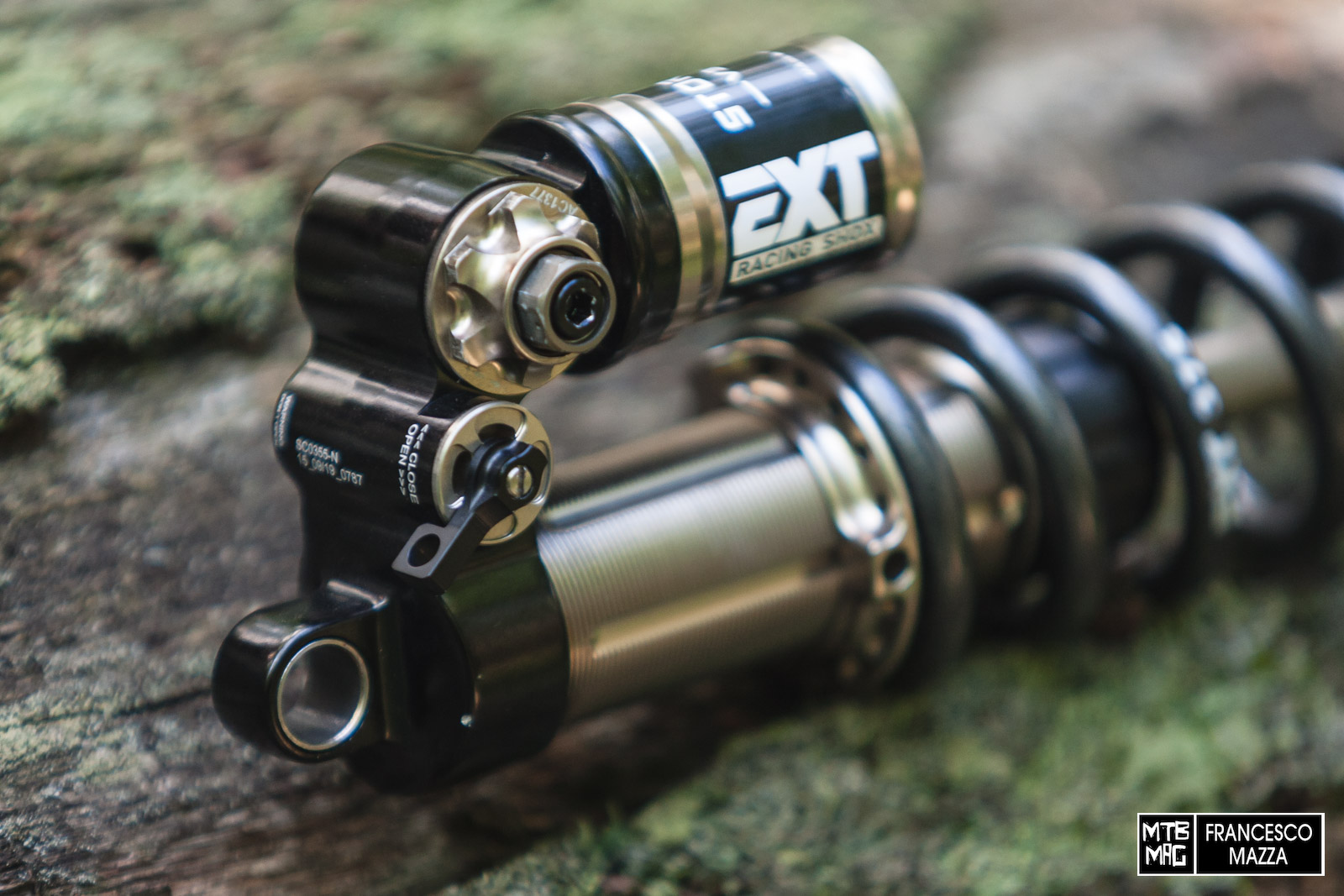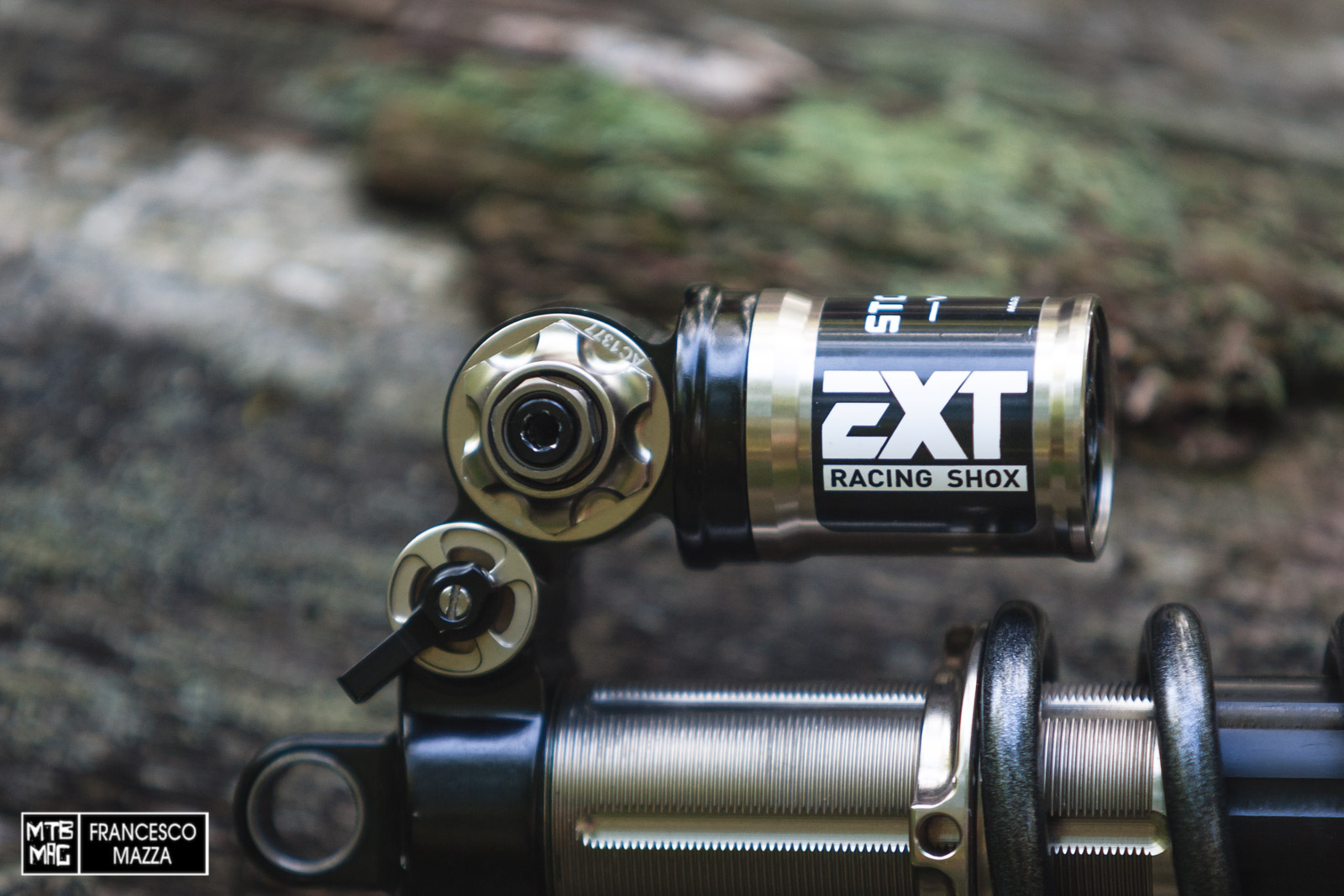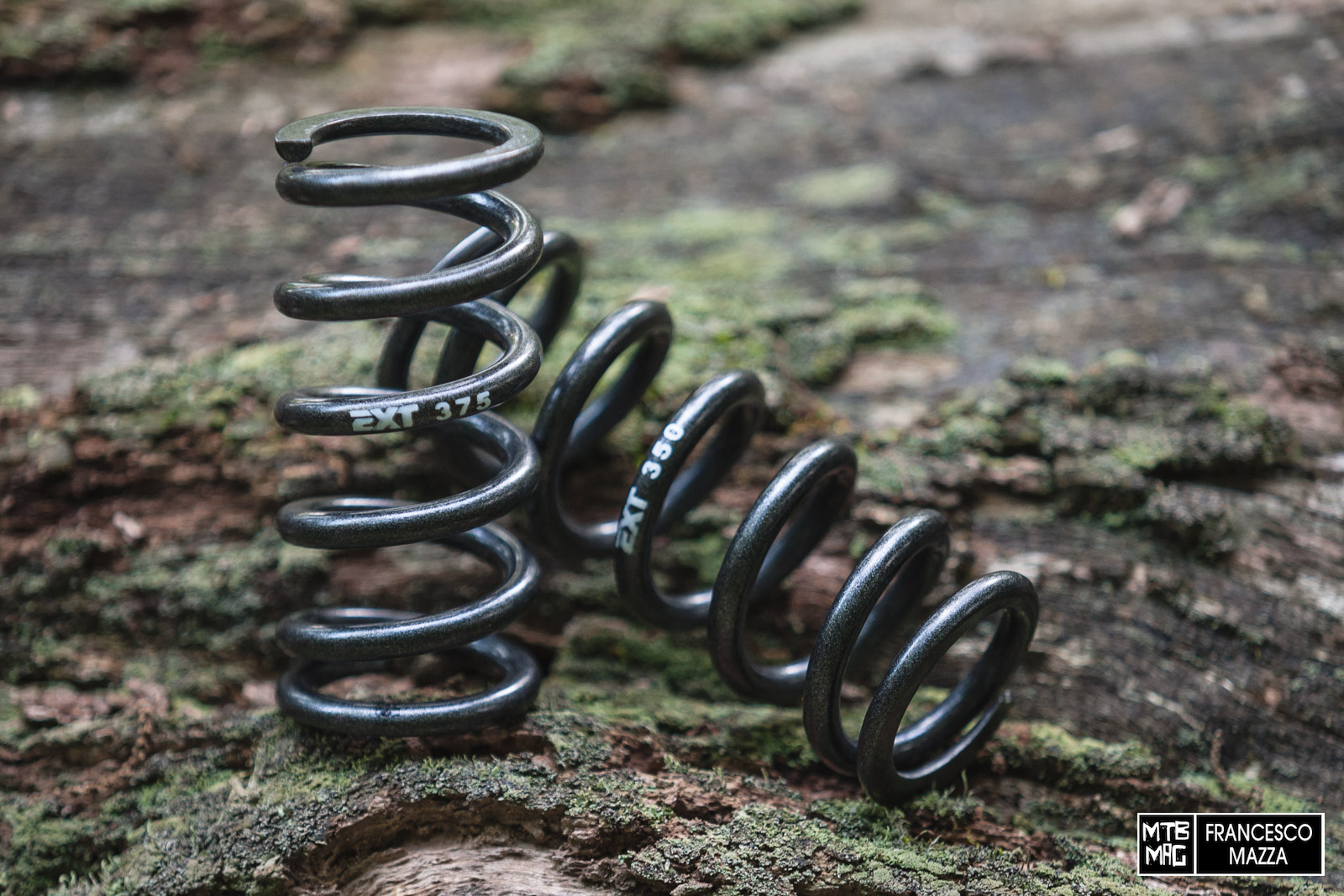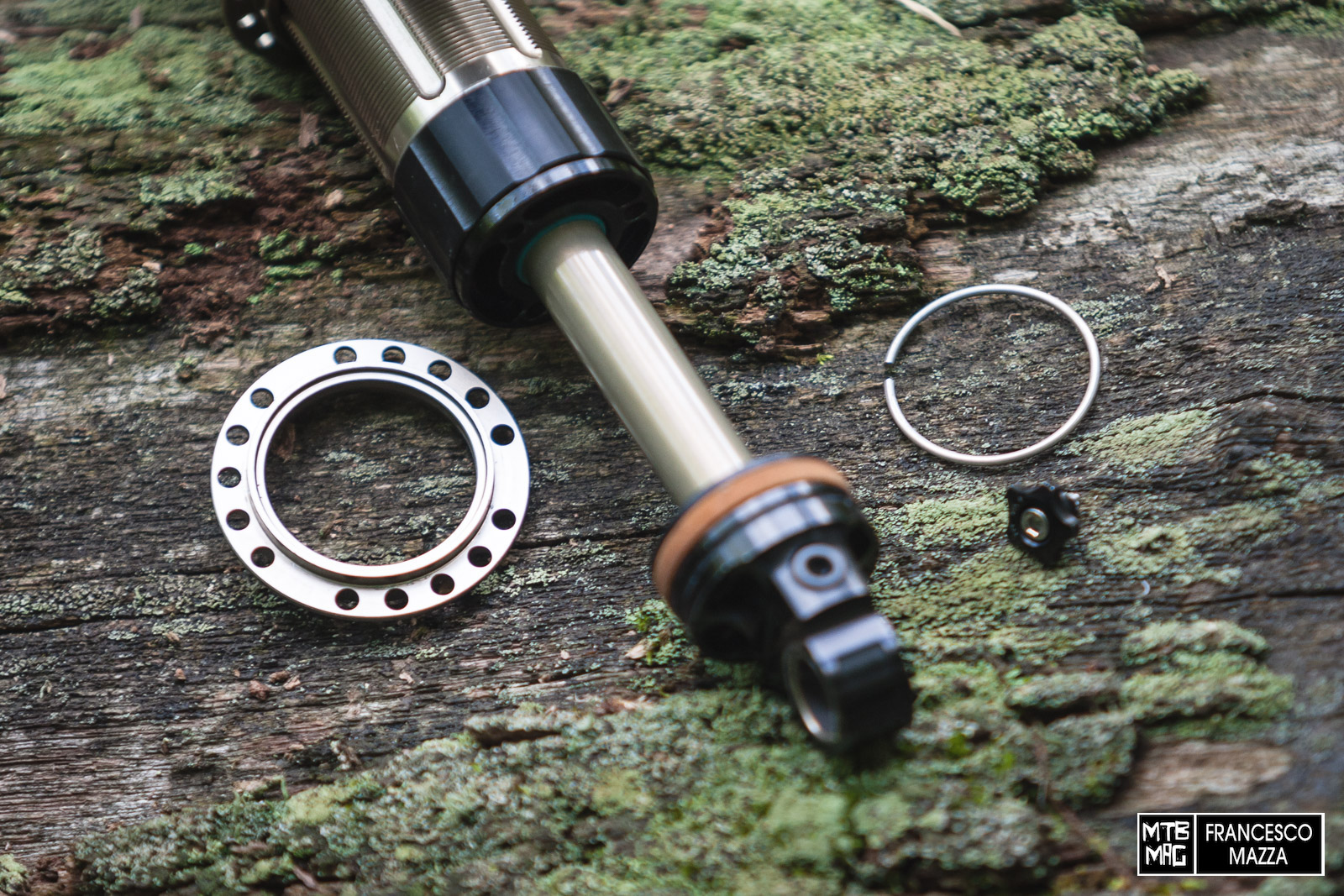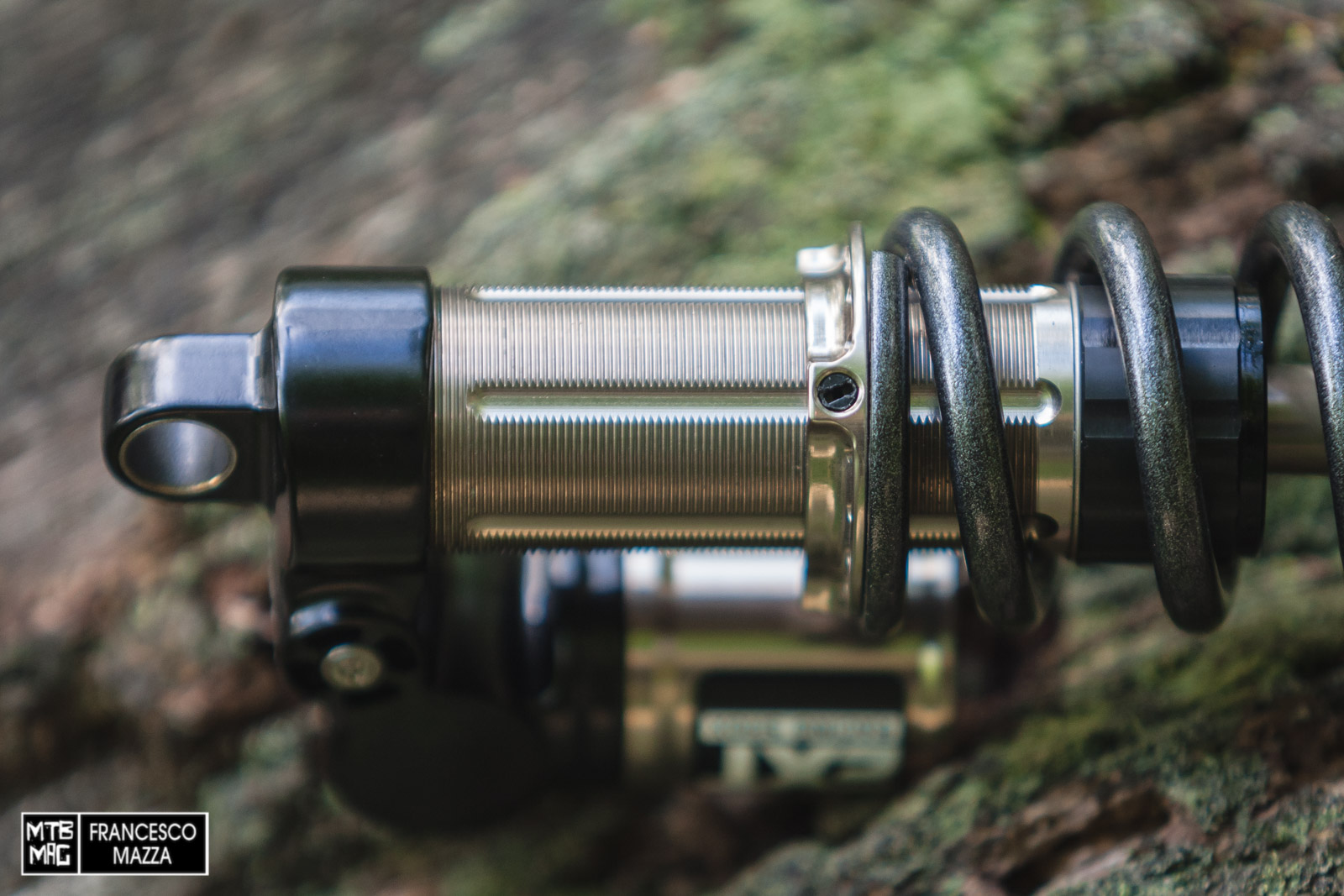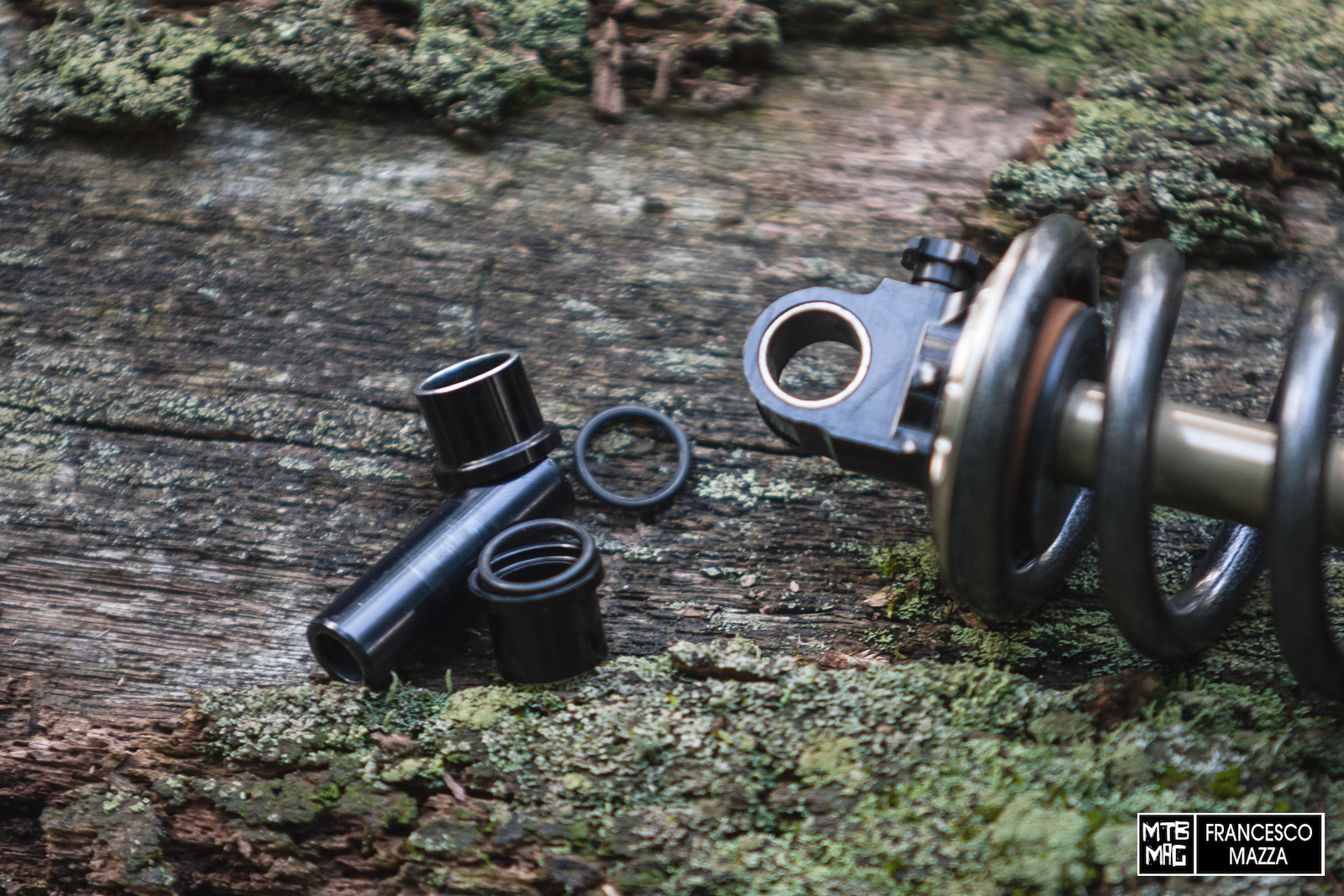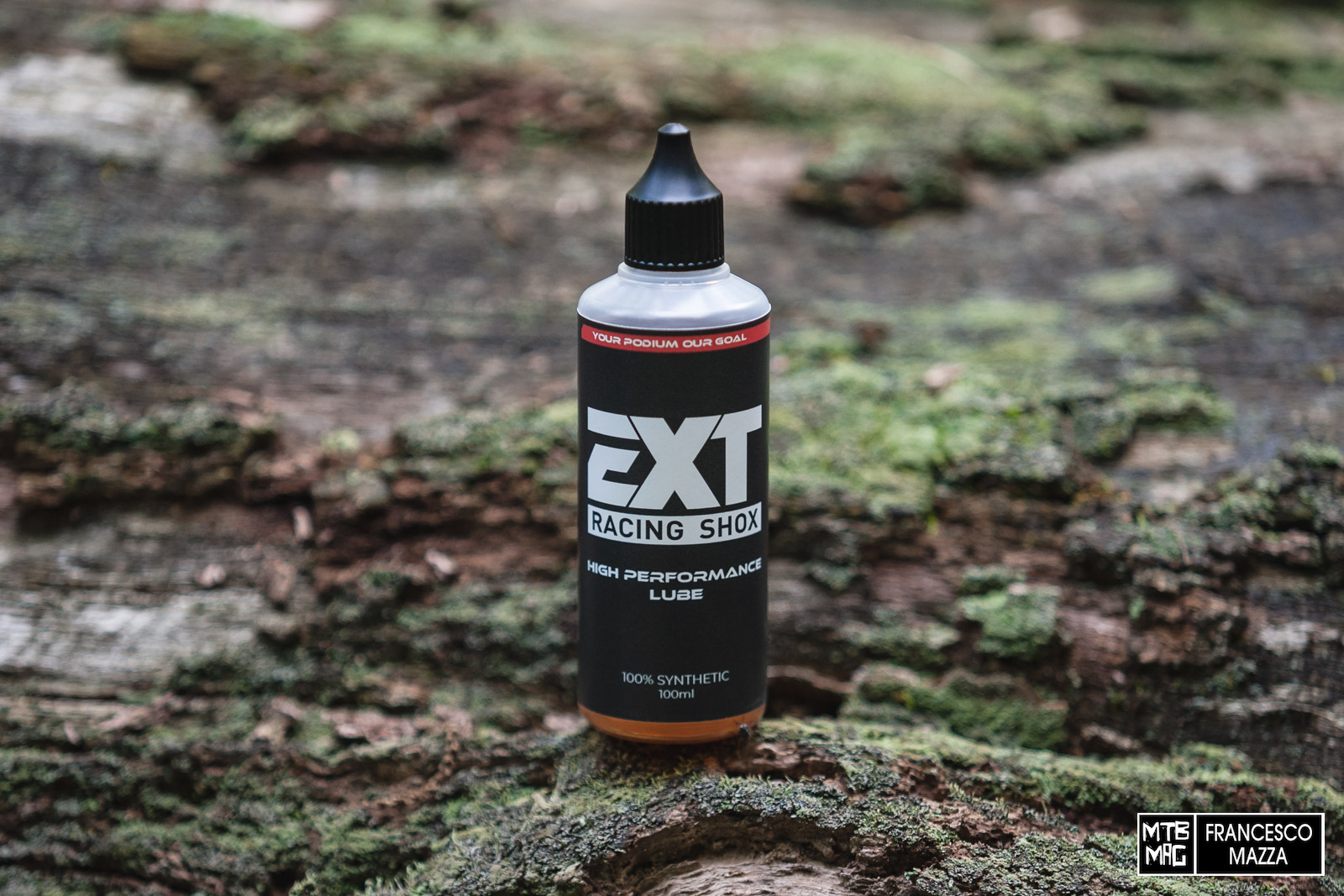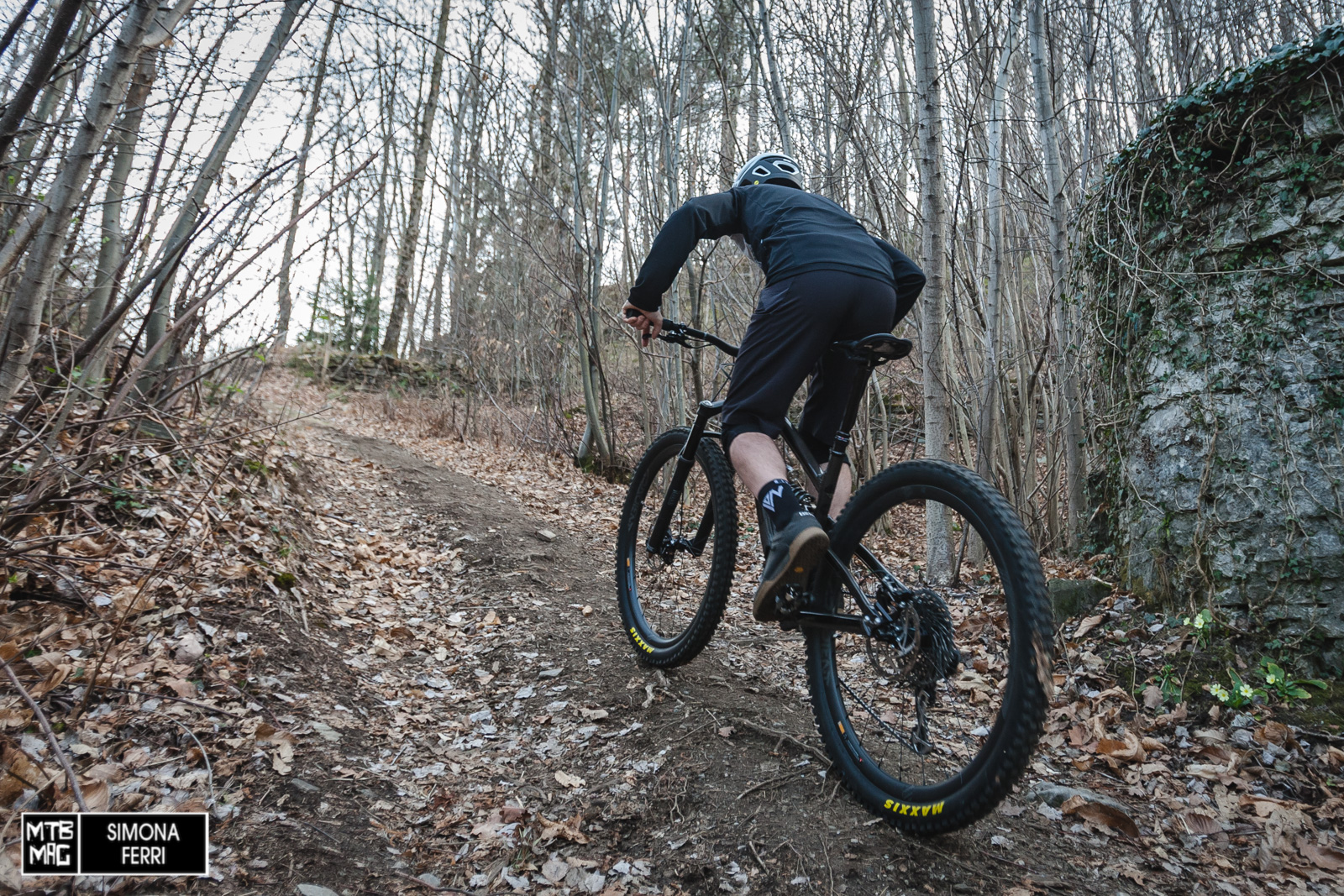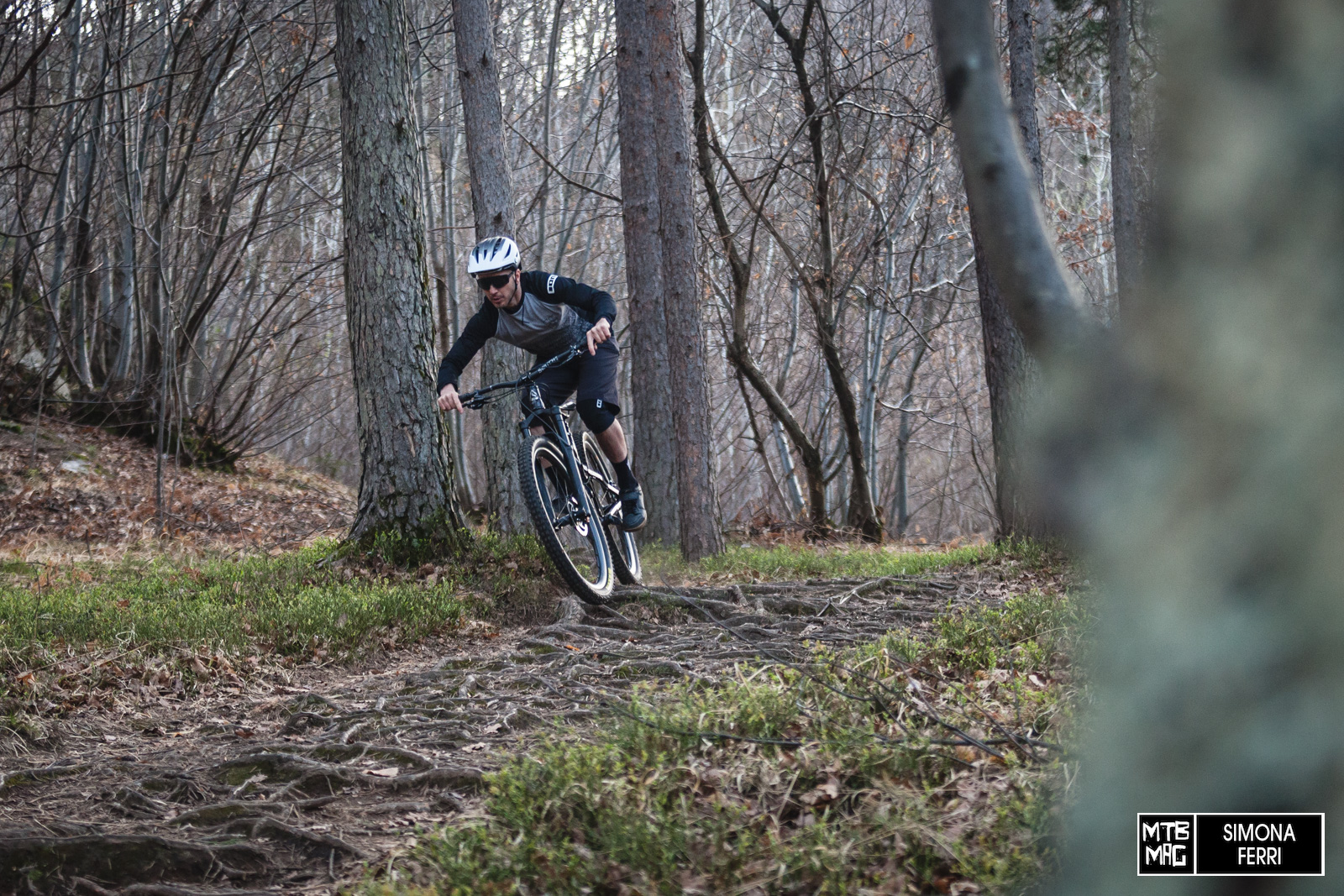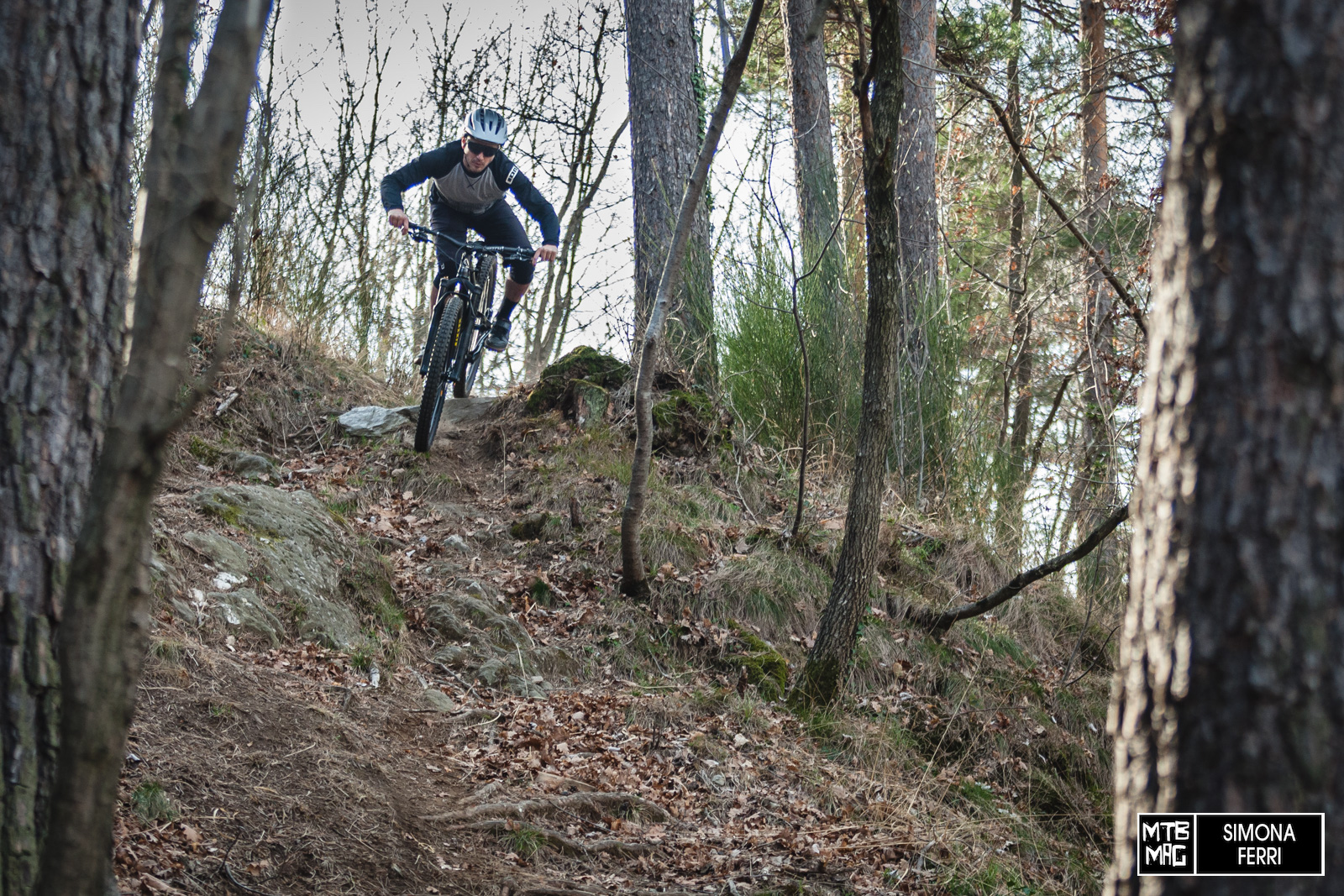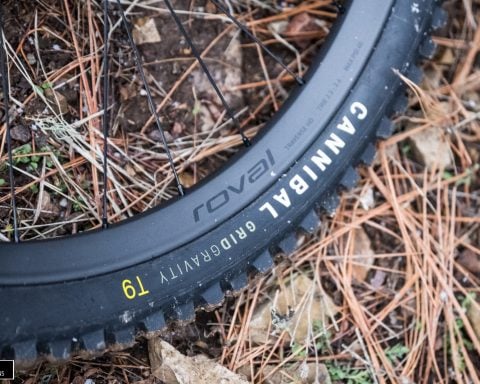.
Extreme Racing Shox, an Italian company specializing in suspension better known as EXT, boasts over 55 years of experience in the world of engines with numerous successes ranging from Formula 1 to the world Rally championships, passing through various other car and motorcycle fields. Since 2014 the small brand based near to Vicenza has brought its know-how appreciated all over the world into the MTB realm, creating two coil shock absorbers, the Arma dedicated to gravity and the Storia dedicated to enduro. In December, EXT substantially updated these two shock absorbers with the third version of both. I tested the Storia Lok V3 with 230mm of eye to eye length and 65mm of travel on the MDE Damper 29 for several months and on a wide range of trails and conditions after using the same shock absorber in the previous version on the same bike for the same amount of months, thus being able to evaluate the performance of the V3 both in absolute terms and in comparison with the V2.
For its dedicated mountain bike shocks, EXT uses a mono-tube hydraulic circuit with separate circuits for compression and rebound in order to make the adjustments completely independent of on another. The reservoir of the V3 version of the Storia Lok has increased dimensions that allow it to adopt lower pressure compared to V2, only 55psi, for greater sensitivity of the shock, offering very low hysteresis and no cavitation, as well as limiting oil overheating. The wider shape also allows its shorter length, reducing the risk of interference with the bottle cage on those frames that have limited space.
The hydraulic side offers a special system dedicated to bottom-out management, with a chamber that houses a piston in its last few millimeters of stroke, increasing the hydraulic resistance by 50% and thus creating greater damping that avoids harsh bottom-outs in case of violent impacts. This technology is called HBC (Hydraulic Bottom-out Control) and in the case of the Storia Lok it’s set internally by EXT based on the specifications of the frame and the rider, while on the Arma HBC, the DH shock absorber, the HBC setting has an external adjustment. The shaft, with its 14mm diameter, is of considerable size and encourages improved lateral stiffness and therefore greater smoothness to the shock absorber.
Considering the effectiveness of the HBC system, EXT has reduced the thickness of the foam external bottom out bumper, thus leaving more free travel to the shock, delegating control of the bottom-out mainly to the hydraulic side instead of the mechanical side offered by the bumper. A plastic disk is placed between the pad and the body of the shock absorber which prevents the pad from being damaged by the shock body itself. This disk can generate a slight and occasional noise as it is free to move on the shaft. EXT indicates that it can be easily remedied by fixing the disk to the pad with a drop of glue. Personally, to avoid contaminating the shaft with glue, I simply solved it with two small scraps of double-sided tape.
Like its predecessor the V2, the new Storia Lok V3 is equipped with a lockout lever that stabilizes the shock absorber for climbing by providing greater support during pedaling. This is not a full lock but an increased damping, managed by a circuit independent from the compression one, which allows the shock to still work in the absorption of impacts while sitting higher in the travel and being less inclined to bob. In the event of major impacts, the lockout circuit self-opens allowing the shock to absorb them. The new Lok system compared to the V2, in which the self-opening of the circuit due to impact was accompanied by a distinct sound, has a more progressive and silent opening.
The Storia Lok is equipped with external adjustments for compression damping both for high and low speed. Both adjusters are not “tool-free”, so it is necessary to use keys to modify the settings. The LSC requires a 4mm Allen key, therefore common in the average multi-tool, but the HSC needs a 12mm wrench, certainly less widespread, so if you want to make adjustments while riding it is necessary to carry a 12mm pocket wrench. Each adjuster offers 15 positions and both utilize a new valve with increased oil flow which allows more accurate adjustments than the previous model. The adjustment range is optimized by the internal set-up, created specifically for each shock absorber by EXT according to the customer’s specifications based on his weight and different aspects of his riding style and, obviously, based on the frame on which the shock absorber will be installed. To carry out the personalization of the shock absorber, EXT provides a customer card to be filled by the customer with different information useful in determining the most suitable set up.
The rebound adjustment offers a range of 8 positions which, thanks to the aforementioned internal set-up made by EXT according to the rider and frame specs, provides a usable range of adjustments that are actually suitable for the intended use, without having de facto useless positions that would never be used, as in many shock absorbers, with a rebound that is far too fast in the first positions and too slow in the last ones. Each of the 8 positions can instead be used based on the rider’s preferences and different riding situations.
EXT springs are made from a special steel called “Super Alloy” which makes them lightweight, comparable in weight to titanium springs but at about one third of the price. The spring material is protected by a hard epoxy paint meant to withstand corrosive agents. They are characterized by a markedly linear behavior so as not to influence the hydraulic damping curve. They are available in 4 length options and 14 different ratings in 25lbs increments, so you can better adapt the shock’s behavior to your needs. EXT recommends using only one turn of spring preload, otherwise if more is needed, you should go up in spring rate. Each shock absorber is sold with two springs so that you can choose the most suitable one. EXT springs can be used with any MTB shock absorber on the market and, if needed, a special adapter is supplied to make the inner diameter compatible.
The spring retention system is formed by the preload collar on one side and the spring plate on the other side is anchored to the shock by means of a snap ring. The V2 series shocks had a taller rebound knob that needed to be removed to be able to extract the spring plate and then the spring, while the new V3 shock absorbers have a lower knob. To extract the stop ring from the V3 it is in fact possible to completely close the rebound knob and further reduce its height or, as was necessary to do on the V2, unscrew the knob and remove it.
The attention to details is clearly derived from the world of engines, such as the preload collar, well-shaped and equipped with a locking grub screw to avoid possible loosening of the preload adjustment during use. The preload collar is equipped with three threaded holes that correspond with the grooves along the threaded body of the shock absorber, so it is sufficient to find the hole that matches the groove based on the chosen preload point and screw the appropriate locking grub screw inside, planting it against the body of the shock absorber. The same grub screw has been the subject to several updates as the EXT technicians have encountered several cases of deformation of the shock body over time due to customers who over-tighten the screw. The V2 version initially used a steel grub screw and then a steel one with a teflon tip, while now the V3 uses a plastic grub screw that prevents over tightening.
The springs by nature, when compressed, tend to bow by flexing laterally in their central part. To protect the body of the shock from possible rubbing of the springs that are deformed during their compression, EXT has placed a hard plastic ring in the point of the shock absorber most exposed to this potential risk. I specify that, after months of using the V2 version that was not equipped with this protection, I did not find any sign of rubbing, however it is a problem that I have encountered in the past with other coil shocks.
EXT provides with its shock absorbers kits of pins and spacers to mount them on any type of frame. Considering that both the Storia Lock and the Arma HBC are available in various lengths, both imperial and metric, trunnion or standard, you simply need to choose the correct spacer kit to use the EXT on your frame. Each kit consists of anodized, polished aluminum alloy pins that interface with the shock’s DU bushings. The two spacers are inserted on the pin, one on each side, which have a special seat for an O-ring seal that keeps water and dirt on the outside of the DU, improving performance and durability.
Recently EXT has also developed a new fully synthetic lubricant suitable for both the shock’s shaft and fork’s stanchions. The High Performance Lube is quite viscous and has excellent adhesive properties, so it adheres perfectly to the treated surfaces, decreasing stiction, improving the smoothness and prevent wear of the parts. I used it both on the Storia Lok and on the Formula Selva R fork, noting an increase in smoothness and a long duration of lubrication.
On the trail
Before starting to use the new Storia Lok V3, we performed a test session with the EXT technicians to test different internal settings of the shock, working on the shim kit to determine the most suitable configuration according to the frame specifications, my weight and my riding style. Once the shock was developed, I was able to start the test, riding the Storia Lok V3 on varying terrain. First of all I appreciated the stabilization of the suspension due to the action of the Lok lever which makes the shock absorber more supportive, working in the highest part of its travel without any bob. It’s key to remember that the i-Link suspension system of the MDE Damper 29 has high anti-squat values, so it is already stable on its own, but the intervention of the Lok system allows you to enjoy greater stability even when you’re out of the seat stand up pedaling on climbs. It still maintains excellent traction and good sensitivity in absorbing small bumps. This makes it efficient even in technical and bumpy climbs and not only on fire roads.
For those who will be using an EXT shock for the first time, it’s necessary to point out that the very first impressions from pumping and parking lot tests just after having mounted it on the bike, are totally misleading. The Storia in fact, at first glance, seems harsh in compression and slow in rebound and will leave you perplexed about the performance of such an advanced shock absorber. It takes just one descent on trail to realize how far the first impressions are from the actual performance of this high end piece of Italy technology. It is therefore important to arm yourself with patience and keys suitable for the HSC and LSC adjustments and carry out as many tests runs as you can to better tune your settings based on feedback obtained from riding. I recommend starting from the fully open compression adjustment and the middle position on rebound to understand the shock and then intervene accordingly. The result can be truly amazing, with a concrete performance that will improve the ride quality of your frame compared to most other shocks on the market.
Regardless of the adjustments, the first part of the travel is incredibly sensitive and provides an increase in traction to the rear wheel and generally stability to the bike. The final part of the travel, on the other hand, is progressive with a fairly smooth ramp to avoid bottom-out, while always using all the travel available. If you don’t normally use the all of the travel, go for a softer spring, because you won’t get violent bottom-out thanks to HBC technology. The central part of the travel, on the other hand, is where the HSC and LSC adjustments allow you to further customize the behavior of the shock absorber, making it more supportive or more plush, more reactive or more subdued. In any case, regardless of the setting you adopt, the Storia has a lively and solid behavior and you can feel that a lot of work is delegated to the hydraulic side of the shock rather than relying on the spring side, so that you can always have maximum control and maximum predictability from the suspension. In addition, the performance is constant even on long descents, since the Storia tends significantly resist overheating.
Overall
The Storia Lok V3 is a very lightweight coil shock, with an aesthetic that exudes technology and an attention for detail that reveals all the passion of a company that is small but with really vast and important know-how. The performance attributes are top notch and are aimed primarily at a race usage, so we are talking about a shock that, to be appreciated, requires time to be aware of the adjustments directly on the trail to get the best performance. This is a product that clearly does not appeal to those who prefer the simplicity of the many “plug & play” shocks on the market but to those who want to significantly improve the performance of their bikes.
Weights
Storia Lok 200×57 + spring 375lbs: declared weight 636g
Storia Lok 230×65: verified weight 410g
Spring 375lbs: verified weight 300g
Pricing
Storia Lok: € 799 + VAT
Replacement spring: € 98 + VAT
Adapter kit: € 10 + VAT
100ml lubricant: € 12 + VAT

